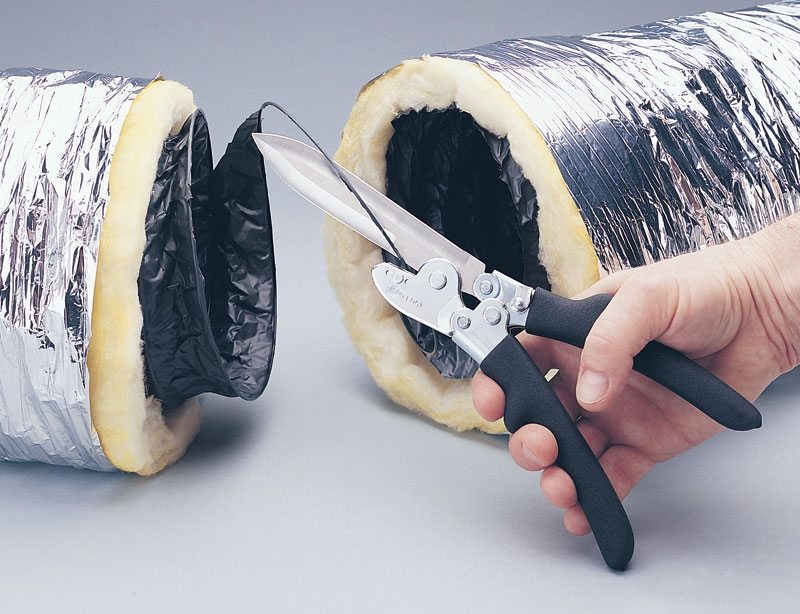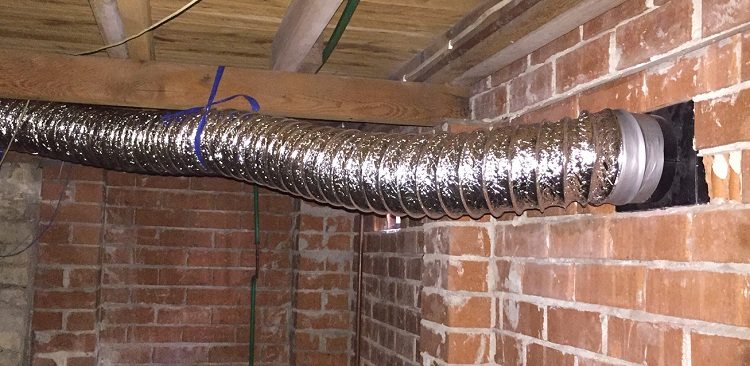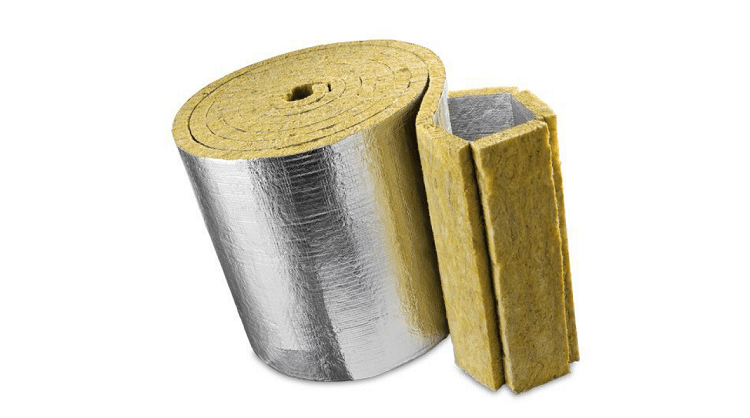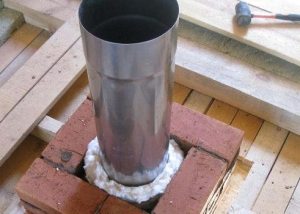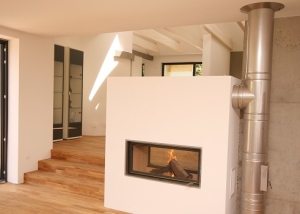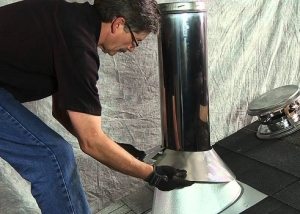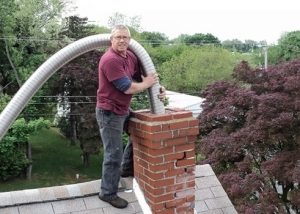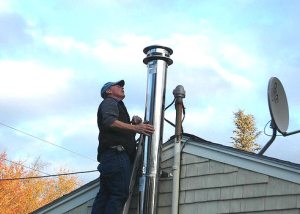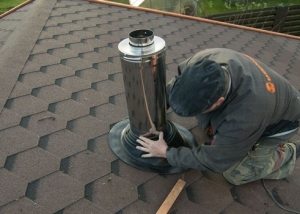The ventilation system is a complex of structures designed to maintain the optimal microclimate in the room and the constant transportation of air masses. Flexible ducts with thermal insulation have become more widespread in the field of ventilation than conventional rigid ones, due to the presence of excellent technical characteristics. Insulated air ducts are used both in the organization of ventilation in production centers and in public buildings.
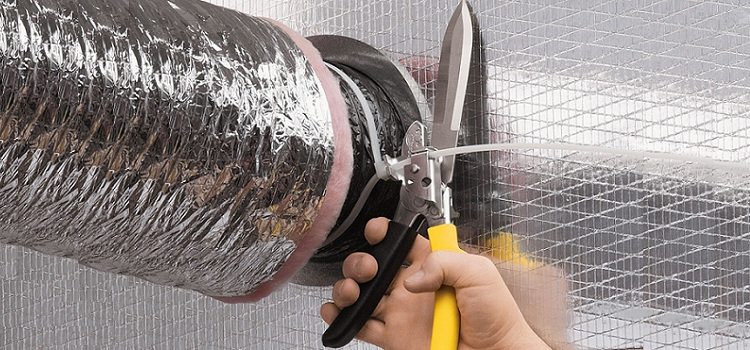
Insulated air ducts made of flexible material are used for the installation of ventilation systems in residential buildings, offices, industrial premises
Content
Flexible insulated ventilation ducts: benefits
Insulated air ducts differ from simple flexible ones by the presence of a factory layer of thermal insulation. This prevents the condensate from freezing inside the structure, which always forms in systems located in rooms with frequent temperature changes. A flexible pipe is usually made of polyester metal (most often aluminum) tape. Rigidity is provided to flexible ducts through the use of a rigid wire frame.
Different insulation materials are used: glass wool, polymeric materials or basalt (mineral) wool. Thanks to the flexible insulated air ducts, it is possible to retain the heat of the transported air when necessary.
Other advantages of flexible ducts with thermal insulation include:
- Significant reduction in vibration. The combination of the softness of the material and the insulation layer literally neutralizes any vibrational waves that adversely affect the duration of the entire system.
- Ease. Flexible air hoses are lighter than rigid pipes, so transporting and installing them requires less power.
- Easy installation. A flexible duct requires a minimum of fittings. To increase the length, only extension inserts may be required. The flexibility of the material avoids the use of elbows.
- Low noise. The ventilation duct, covered with a layer of insulation, practically does not allow the noise that is created when the air masses move through the pipe. This factor is especially relevant for metal sleeves, as they are considered the most “noisy”.
- Long service life. Even the thinnest flexible ducts demonstrate a sufficiently long operational period.
- Fire resistance. Insulation of non-combustible materials prevents the possible ignition of the air duct and the spread of fire. This is very important, since it is often an uninsulated duct that causes a fire on production sites.
Important! Non-insulated flexible ducts have a limit of interaction with high and low temperatures of the internal environment and air. Thermal insulation softens the negative influence of temperature factors on the material.
The insulation of the air ducts can be internal or external. The latter option is considered the most acceptable, since in this case the duct section does not change and the probability of the spread of bacteria inside the sleeve is excluded.
Flexible duct regulations
In order for the properties of the insulated duct not to lose over time, some rules of use and installation must be observed. Pieces of flexible ventilation hoses should be stretched to the maximum length to prevent a decrease in air pressure inside. There should be no sagging or sagging in the system - this should be especially carefully monitored when mounting the ventilation duct in the ceiling space.
Important! When passing a flexible air duct through brick walls, it is recommended to use a metal sleeve adapter.
An important part in the installation of the duct is its grounding. This process applies to both rigid and flexible hoses. Due to the constant transport of air, static electricity can build up in the system. The use of flexible air ducts does not provide for any direct contact with the ground and installation below ground level. Conducting such systems through the floors is also impossible. In addition, the installation of vertical systems with a length of more than two floors is undesirable.
Thermal insulation is able to protect the soft channel structure from flexible material, but, nevertheless, installation should be carried out as accurately as possible. Before the final launch of the system, it is mandatory to check at all stages of commissioning.
How to choose a material for insulation of ventilation ducts?
If it is not possible to purchase a ready-made insulated air duct, you can insulate the existing duct. The task that needs to be solved in the first place is the choice of a heater that most suits the set requirements. Thermal insulation is as follows:
- Mineral fibers. They come on sale in the form of semi-rigid panels or sections rolled up. The fibers are quite flexible, they can be compressed, giving additional density. Sheets of mineral fibers can take any form. Perfectly cope with the functions of protection against fire, do not spoil when the temperature drops.
- Foam elastomers. Flexible non-combustible heaters - closed cell foams. Not affected by biological factors such as mold and aggressive microorganisms. Foam elastomers also repel moisture. Heat-insulating shells from this category of materials are very easy to install.
- Pipe sections. External pipe sections are used for combined insulation. A layer of another insulation is laid between the surface of the air pipe and the section. Reinforced aluminum protects the duct from aggressive environmental influences.
- Felt. Environmentally friendly material that needs additional protection. During internal laying, the felt is covered with fiberglass impregnated with a special solution. For outdoor applications, the felt is protected by a reinforced aluminum sheet.
- Materials obtained due to the polymerization of carbohydrate compounds (polyethylene, polyvinyl chloride, polyurethane). Flexible polymers with a low price. Available in the form of plates, rolled up in rolls or shells.
The choice of material for insulation and the execution of work must comply with the normative documentation of SNiP: on the thermal protection of the building, on heating, ventilation and air conditioning systems, insulation materials.
How are ducts insulated?
The duct insulation process depends on the material selected. For systems with a round cross-section, roll insulation or shells of the desired diameter are the best option.Roll insulation materials are wrapped around the pipe (mineral wool is recommended to be wrapped in 2 layers) and crimped with clamps. Waterproofing is also carried out by rolled polymer-bitumen materials. An additional layer not only protects the thermal insulation, but also improves its properties.
If insulation of the air channel with a rectangular or square section is required, it is most convenient to use plate heaters. Expanded polystyrene and other foam materials are glued with a special glue, which is a liquid polymer. Plates are laid over the entire area of the pipe according to the principle of brickwork. The gaps between the insulation sections are laid with finely chopped polystyrene foam elements and then sealed.
A flexible insulated duct is a product that in many respects exceeds the properties of rigid ventilation pipes. But it is worth remembering that its use is not possible in all conditions. Insulation of ventilation pipes is a mandatory procedure that can significantly increase the shelf life of the system.
